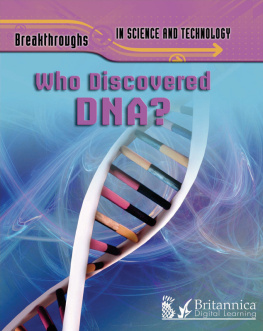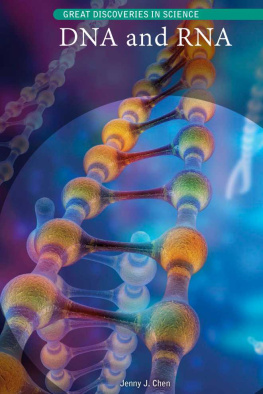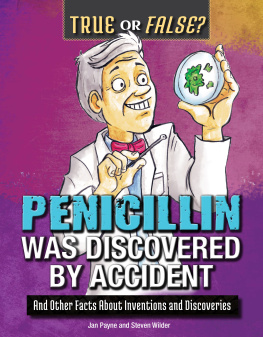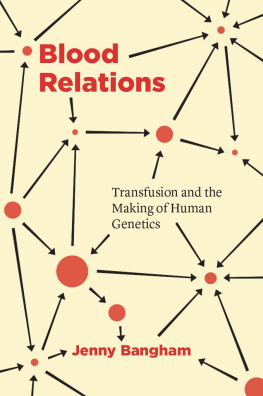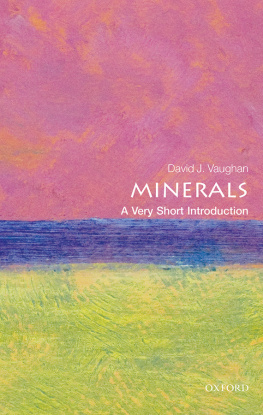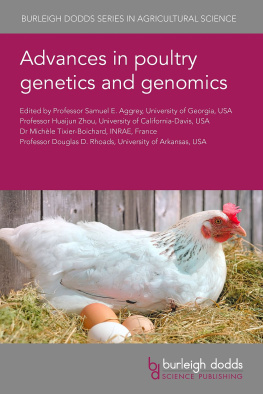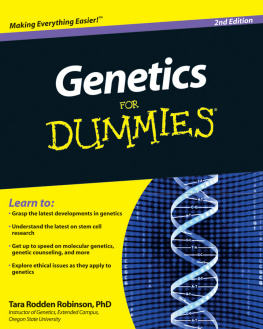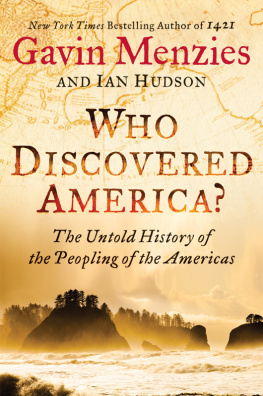Jenny Vaughan - Who Discovered DNA?
Here you can read online Jenny Vaughan - Who Discovered DNA? full text of the book (entire story) in english for free. Download pdf and epub, get meaning, cover and reviews about this ebook. year: 2012, publisher: Britannica Digital Learning, genre: Romance novel. Description of the work, (preface) as well as reviews are available. Best literature library LitArk.com created for fans of good reading and offers a wide selection of genres:
Romance novel
Science fiction
Adventure
Detective
Science
History
Home and family
Prose
Art
Politics
Computer
Non-fiction
Religion
Business
Children
Humor
Choose a favorite category and find really read worthwhile books. Enjoy immersion in the world of imagination, feel the emotions of the characters or learn something new for yourself, make an fascinating discovery.
- Book:Who Discovered DNA?
- Author:
- Publisher:Britannica Digital Learning
- Genre:
- Year:2012
- Rating:3 / 5
- Favourites:Add to favourites
- Your mark:
- 60
- 1
- 2
- 3
- 4
- 5
Who Discovered DNA?: summary, description and annotation
We offer to read an annotation, description, summary or preface (depends on what the author of the book "Who Discovered DNA?" wrote himself). If you haven't found the necessary information about the book — write in the comments, we will try to find it.
Who Discovered DNA? explores the fascinating advances that have been made in the study of DNA and genetics.
Who Discovered DNA? — read online for free the complete book (whole text) full work
Below is the text of the book, divided by pages. System saving the place of the last page read, allows you to conveniently read the book "Who Discovered DNA?" online for free, without having to search again every time where you left off. Put a bookmark, and you can go to the page where you finished reading at any time.
Font size:
Interval:
Bookmark:



E-book published in 2015 by Encyclopdia Britannica, Inc., in association with Arcturus Publishing Limited, 26/27 Bickels Yard, 151-153 Bermondsey Street, London SE1 3HA. Britannica, Encyclopdia Britannica, and the Thistle logo are registered trademarks of Encyclopdia Britannica, Inc.
ISBN 978-1-62513-312-0 (e-book)
This edition first published in 2010 by Arcturus Publishing
Distributed by Black Rabbit Books
P.O. Box 3263
Mankato, Minnesota 56002
Copyright 2010 Arcturus Publishing Limited
All rights reserved
Planned and produced by Discovery Books Ltd.
www.discoverybooks.net
Managing editor: Laura Durman
Editors: Amy Bauman and Penny Worms
Consultant: Andrew Solway
Designer: Ian Winton
Illustrator: Stefan Chabluk
Library of Congress Cataloging-in-Publication Data
Vaughan, Jenny, 1947
Who discovered DNA? / Jenny Vaughan.
p. cm. -- (Breakthroughs in science and technology)
Summary: Looking at some of the major inventions and discoveries shaping our world today, Breakthroughs in Science profiles the research leading up to the discovery (not just profiles of the one or two key players). Each book describes the famous moment and then examines the continued evolution illustrating its impact today and for the future-- Provided by publisher.
Includes index.
1. DNA--Juvenile literature. I. Title.
QP624.V38 2011
572.86--dc22
2010011021
Picture Credits
Corbis: cover (Dennis Scott), 8 (The Gallery Collection), 14 (Jeff Vanuga/Jeff Vanuga, Dubois, Wyoming), 36 (Jo Yong-Hak/Reuters), 40 (Amy Toensing/Sygma), 43 (Yonhap/epa). Getty Images: 31 (Science VU/Drs. H. PotterD. Dressler), 34 (Sam Yeh/AFP). iStockphoto.com: 41 (Hans Laubel). Library of Congress: 29. Science Photo Library: 10 (Omikron), 17 top (JJP/Philippe Plailly/Eurelios), 18 (Dr. Jeremy Burgess), 21 (Kwangshin Kim), 23, 24 (A Barrington Brown), 28 (Ria Novosti), 39 (Corbin OGrady Studio). Shutterstock Images: title page and 25 (Matthew Cole), 6 (Eric Gevaert), 7 (Alexander Raths), 9 (Geoffrey Kuchera), 12 (R Nagy), 19 (Michael Ledray), 22 (Damian Palus), 33 (Christophe Buquet), 32 (Pedro Salaverra), 35 (Henrik Larsson), 38 (Colette3). Wikimedia Commons: 13 (Linda Hall Library), 16.
Every attempt has been made to clear copyright. Should there be any inadvertent omission, please apply to the copyright holder for rectification.
The author would like to thank John Farndon for his invaluable help and advice in writing this book.
SL001445US Supplier 03, Date 0510
Contents
An age-old mystery
What makes us the way we are? Why do some of us have dark hair and others have light hair? Why do cats only have kittens and never puppies?
For centuries, no one knew the answers to these questions. It took many years of inquiry and research to understand how organisms (living things) inherit characteristics from their parents.
Two kinds of study
Two different kinds of study led to this understanding. One involved breeding plants and animals and noticing how living things pass their characteristics, such as color, size, and shape, to their offspring. This is called heredity.
Another area of study looked at how organisms are constructed. Scientists learned that organisms are all made up of tiny building blocks called cells. The very smallest living things, such as bacteria, are made up of just one cell, while large organisms, such as humans, have trillions of cells.
T HATS A F ACT !
Some bacteria are so small that a million can cover the head of a pin.

Sheep, like other living things, produce offspring like themselves. The young inherit characteristics from their parents. In this case, young lambs, like adult sheep, will have four legs, will eat grass, and will have thick, woolly coats.

This photograph shows bacteria being grown in a laboratory. Bacteria are single-celled organisms that reproduce by dividing in two. They reproduce very quickly to make new organisms that are like the original ones.
Eventually, scientists discovered that living things pass on their characteristics through something that is found in living cells. That something is an extraordinary substance called deoxyribonucleic acid, or DNA.
A great breakthrough
Discovering DNA and how it works was one of the greatest breakthroughs in science in the last 100 years. Today, scientists know not only how DNA works but also how to use DNA to give living things characteristics they could never have naturally. They can make clonesexact copies of organisms. They are beginning to create life synthetically (from scratch) in a laboratory.
Life needs life
Until as late as the 1800s, many scientists believed that some living things appeared spontaneouslythat is, without any parents. For example, food that was left out would spoil when tiny germs (we now call them bacteria) appeared in it.
French biologist Louis Pasteur set out to show that even the tiniest life-forms had to come from somewhere. In a set of experiments, he boiled beef broth to kill any existing germs. Then he kept the broth in flasks with special filters to keep out any dust or particles. No germs grew in the broth. But when he opened the flasks to the air, the broth soon spoiled.
Pasteur showed that bacteria did not appear spontaneously, which confirmed earlier work by 17th-century scientist Francesco Redi.
I prefer to think that life comes from life, rather than from dust.
Louis Pasteur
Breakthrough
Louis Pasteur proved that life does not appear spontaneously. His experiments with bacteria showed that living things are produced only by other living things like themselves.
The first farmers
Even in ancient times, people discovered they could influence heredity. When early humans started to settle in one place, they began to grow the food they needed instead of hunting and foraging for it. These were the first farmers. Over many years, they turned wild grasses into cereal crops such as wheat, barley, rice, maize, millet, and sorghum. They did this in a process called selective breeding. They collected the seeds from the best plants of one generation of crops to produce the next generation of plants. Better, tastier vegetables were also produced this way.
Farmers realized that animals could be changed by selective breeding, too. They bred animals that had characteristics or traits they wanted, such as cattle with more meat and dogs that were easy to train for hunting or herding. But even though farmers had discovered that they could influence heredity, they did not understand what made this possible.

These pictures are from ancient Egypt, and date from around 4,000 years ago. They show us that people had by then already developed grain crops from grasses and bred farm animals from wild ones.
Font size:
Interval:
Bookmark:
Similar books «Who Discovered DNA?»
Look at similar books to Who Discovered DNA?. We have selected literature similar in name and meaning in the hope of providing readers with more options to find new, interesting, not yet read works.
Discussion, reviews of the book Who Discovered DNA? and just readers' own opinions. Leave your comments, write what you think about the work, its meaning or the main characters. Specify what exactly you liked and what you didn't like, and why you think so.

